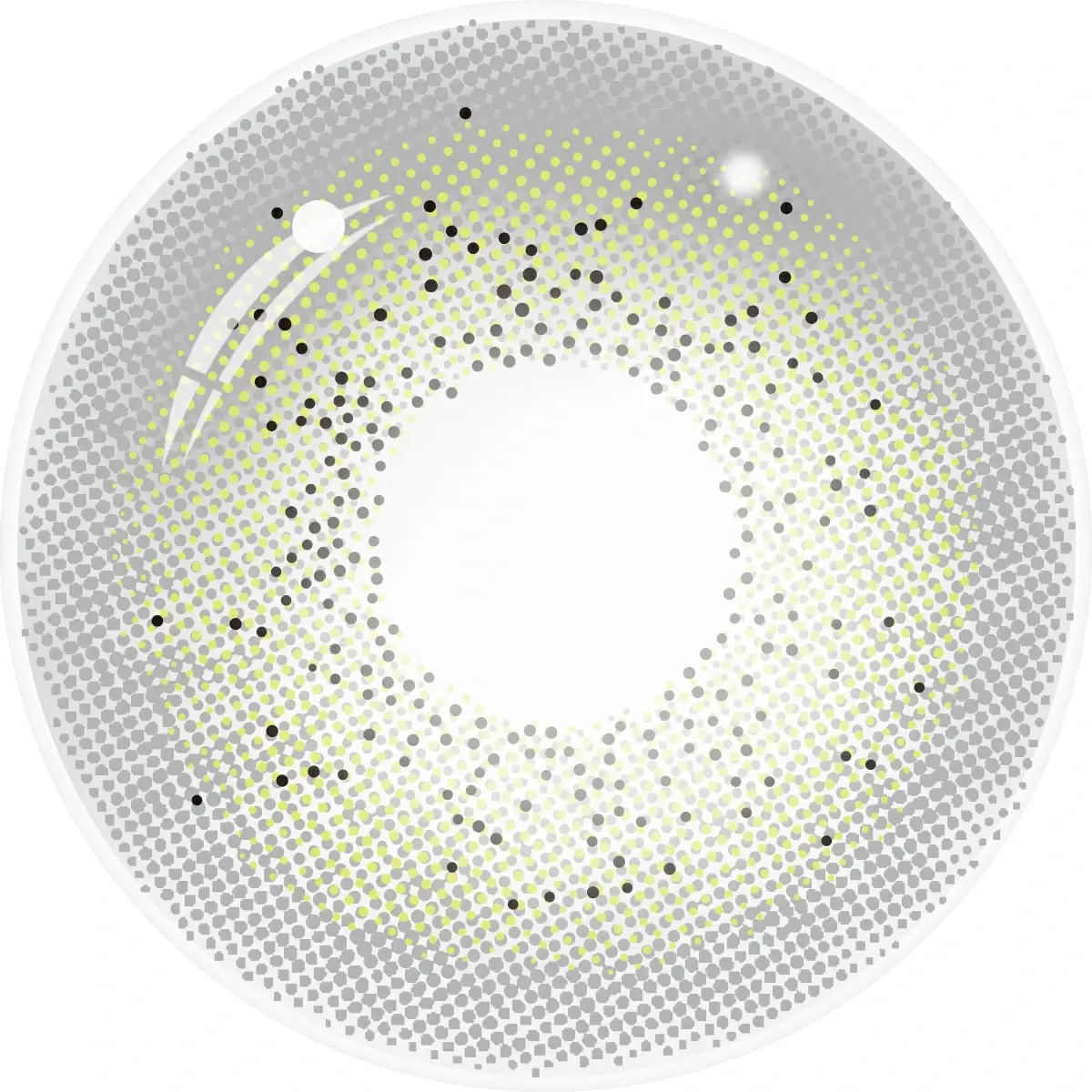White contact lenses, also known as sclera contact lenses or full-eye contact lenses, are a type of colored contact lens that completely covers the entire visible portion of the eye, including the iris, pupil, and sclera (the white part of the eye). Unlike regular colored contact lenses that only cover a portion of the eye, white contact lenses create a dramatic and striking effect by completely obscuring the natural eye color.
Here are some key points about white contact lenses:
- Design: White contact lenses feature a solid white or off-white color that covers the entire front surface of the eye. They create a unique and otherworldly appearance, often associated with supernatural or dramatic characters, such as zombies, vampires, ghosts, or fantasy creatures.
- Size: White contact lenses are typically larger in diameter than regular contact lenses. They are designed to extend beyond the iris and cover the entire visible eye area, including the sclera. This larger size enhances the overall effect and creates a more dramatic look.
- Material and Comfort: White contact lenses are usually made from a gas-permeable material that allows oxygen to reach the eye. This helps maintain eye health and comfort during wear. However, it’s important to note that wearing sclera lenses may require a period of adjustment due to their larger size and potential for reduced tear flow behind the lens.
- Special Effects and Cosplay: White contact lenses are popular among individuals involved in special effects makeup, cosplay, Halloween costumes, or theatrical performances. They can add an extra level of realism and visual impact to a character’s appearance.
- Prescription and Non-Prescription Options: White contact lenses are available in both prescription and non-prescription options. If you require vision correction, you can find white contact lenses with your specific prescription. However, it’s crucial to consult with an eye care professional before obtaining any contact lenses, including white ones, to ensure proper fitting and safe usage.
It’s important to note that due to their size and the complete coverage of the eye, white contact lenses may require additional care and attention during insertion, removal, and cleaning compared to regular contact lenses. Follow the instructions provided by the manufacturer and your eye care professional for safe handling and maintenance.
Additionally, it’s crucial to prioritize eye health and avoid sharing or using white contact lenses without proper guidance and hygiene practices. Consult with an eye care professional to determine if white contact lenses are suitable for your needs and to receive guidance on their safe usage.
What is the difference between white contact lenses and other colored contact lenses
The main difference between white contact lenses and other colored contact lenses lies in their appearance and the effect they create when worn.
White Contact Lenses:
White contact lenses are characterized by their solid white or off-white color that covers the entire visible portion of the eye, including the iris, pupil, and sclera. They create a dramatic and striking effect, completely obscuring the natural eye color. White contact lenses are typically larger in diameter and can give the eyes a more otherworldly or supernatural appearance. They are commonly used for special effects makeup, cosplay, theatrical performances, or to achieve a specific character look, such as zombies, vampires, ghosts, or fantasy creatures.
Other Colored Contact Lenses:
Other colored contact lenses, such as those available in various shades of blue, green, brown, gray, or other vibrant colors, aim to change or enhance the natural eye color. These lenses can be translucent or opaque, depending on the desired effect. Unlike white contact lenses, they usually do not cover the entire visible eye area, but rather only the iris or a portion of it. They are designed to provide a more subtle or natural-looking color change, enhancing the appearance of the eyes without completely masking the original eye color.
Here are a few key differences between white contact lenses and other colored contact lenses:
- Coverage: White contact lenses cover the entire visible eye area, including the iris, pupil, and sclera, while other colored contact lenses typically only cover the iris or a portion of it.
- Effect: White contact lenses create a dramatic and otherworldly appearance by completely obscuring the natural eye color. Other colored contact lenses aim to change or enhance the natural eye color in a more subtle or natural-looking way.
- Size: White contact lenses are often larger in diameter compared to regular colored contact lenses. Their larger size enhances the dramatic effect and can create a more noticeable visual impact.
- Usage: White contact lenses are commonly used for special effects makeup, cosplay, theatrical performances, or specific character looks. Other colored contact lenses are often used for everyday wear, fashion, or cosmetic purposes to achieve a desired eye color change or enhancement.
It’s important to note that regardless of the type or color of contact lenses, proper care, hygiene, and professional guidance are essential for safe usage. Always consult with an eye care professional to determine the suitability of contact lenses, obtain a prescription if necessary, and receive instructions on proper handling, insertion, removal, and maintenance.
